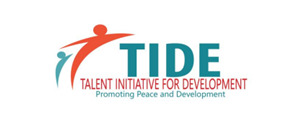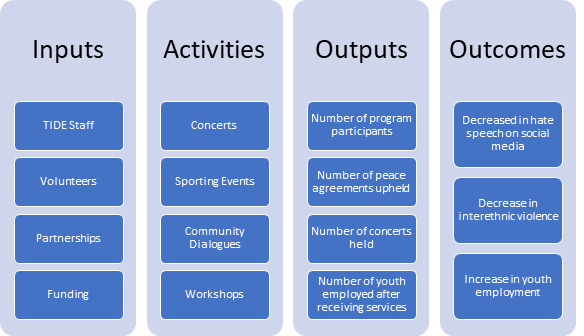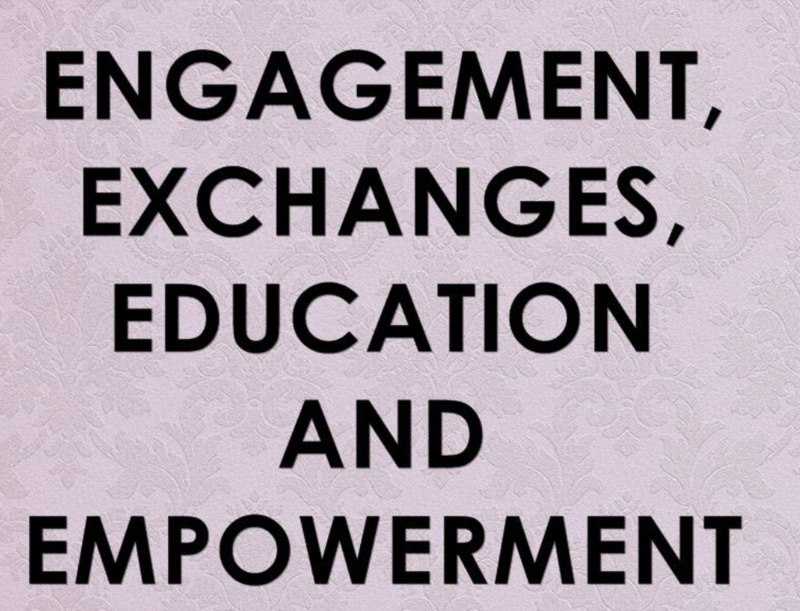South Sudan NGO
This presentation was created by the South Sudan Team: Sean Lanning, Benjamin Peterfreund, Sarah Pincus, Bailey Shirk
GMAP Context:
South Sudan became its own country in 2011, following an overwhelming vote in a referendum regarding independence, and decades of civil war with Sudan.
The country of South Sudan is incredibly diverse, the biggest ethnic groups are the Dinka, who traditionally have been aligned with the government and President Kiir, (right) and the Nuer who have been aligned with the rebels and Vice President Machar. (left)
In 2013, civil war emerged after President Kiir accused VP Machar of instigating a failed coup attempt. 2018, a power-sharing agreement was signed between Kiir/Machar and the rebels. During the civil war:
-
War crimes, and Crimes Against Humanity are believed to have been committed by both the government rebel groups
-
Ethnic Cleansing by the government- one example is the Shilluk who were driven out of Malakal featured in the Vice video.
3. Some have labelled the conflict as genocidal - most notably a former UK Minister.
Downstream Prevention:
South Sudan has recently begun a transitional justice process to deal with its legacy of Genocide and Mass Atrocities. Three key transitional justice measures in South Sudan - first steps towards enacting these mechanisms came in 2020: 1) hybrid court to prosecute those who violated human rights and atrocity crimes, 2) truth commission to investigate and document patterns of human rights abuses and causes of the conflict, 3) reparations program .
Midstream Prevention:
Even though the civil war is technically over, there remains a vast amount of inter-ethnic violence which has the potential to turn into mass atrocities. In 2020 alone, there have been over 2,000 people killed in identity-based violence.
A number of top NGOs engaging in risk assessment are warned about the potential for violence. Genocide Watch calls South Sudan a “Genocide Emergency” and that as of 2020, South Sudan is in the 9th stage of genocide, extermination. The Global Centre for the Responsibility to Protect calls South Sudan a “serious concern.” And the Early Warning Project gives South Sudan a 5.9% chance of a new onset of mass killings in the next two years (11th highest in the world)
Two particularly important facts about ongoing tensions are that 1) current level of localized violence may be higher than during the country’s 2013-2015 civil war. 2) resource pressure is a key source of conflict in the country, climate change is further exacerbating the situation
However, despite ongoing violence, the country has been on the path to recovery. The following graphs come from the Fragile States Index and the Early Warning Project.
Amnesty International's Interactive Map
The Nature of the NGO Sector:
Including its Size, Scope and Relationship to Government
Size:
The exact number of operating NGOs is unknown. The South Sudan Relief and Rehabilitation Commission keeps track of the active NGOs in the country but they do not publish that information (USAID, 2020).
The most accurate count of NGOs in South Sudan is from the NGO Forum. The NGO Forum is a voluntary, independent body. Currently, there are 312 national and 114 NGOs that are members of the South Sudan NGO Forum (South Sudan NGO Forum, n.d.).
The most robust report from the South Sudan NGO Forum was published in 2015. In 2015, the number of NNGOs (242) surpassed the number of INGOs (142) for the first time. More than half of the INGOs in South Sudan have their headquarters in the USA, UK or Switzerland.
Scope
NGOs started becoming active in South Sudan in the 1970s, but many more formed in the 1990’s during OLS- an aid operation responding to the wars and famines. In recent years, international NGOs have continued to rise in times of crisis (Moro et al., n.d.).
Over two thirds of the population (7 million people) are in need of assistance from the NGOs. NGOs are responsible for providing clean water, shelter, education, and aiding in peace building efforts. Many humanitarian efforts are responsible for operations that should be the government’s role in protecting their citizens, especially with regards to gender based violence, particularly rape.
The UN is involved with peace-keeping efforts, but generally are not involved in many on the ground efforts. Instead, local organizations apply for UN grants, and they provide direct relief by funding those grants.
Over time, more national NGOs have formed. Though some have local, grassroots offices, most are run country-wide.
Relationship to the government:
The government does not provide any funding to the NGO sector.
February 16, 2016, President Salva Kiir signed the NGO Bill (repealing and replacing the NGO Act of 2003) and the Relief and Rehabilitation Commission Bill.
The legislation requires NGOs to register with the government. Prior to registration, NGOs must identify all funding sources. Once an NGO is registered, it must comply with government monitoring, evaluation and auditing of all of its activities (Goitom, 2016).
The Relief and Rehabilitation Commission Bill established an NGO regulatory body. While it is intended to be an independent entity, the Commission is under the auspices of the Minister of Humanitarian Affairs and Disaster Management. The Commission is made up of a chairperson, deputy chairperson and three members, who are all appointed by the President. There is also an executive director who is tasked with carrying out the Commission's daily functions. This person is appointed by the Minister in consultation with the chairperson.
The legislation includes provisions mandating that NGOs hire locals, requiring at least 80% of the NGOs employees to be South Sudanese citizens. Additionally, South Sudanese applicants need to be given priority when hiring the remaining 20% of seats.
Interestingly, these laws faced widespread criticism.
Eugene Owusu, the UN Humanitarian Aid Coordinator for South Sudan said, “the adoption of [the NGO] Bill for South Sudan will have wide-ranging and negative ramifications for the humanitarian operation at a time when needs are even higher.”
The United States had given South Sudan $1.5 billion since 2013 and were concerned that the change in government expectations would interrupt already successful efforts (Goitom, 2016).
Talent Initiative for Development (TIDE)
Vision: To create an empowered community and prosperous youth platform that is united in the advancement of national heritage arts, peace, democratic governance, development and creativity among the youth that enhances nation building.
Mission: As TIDE, we are burdened by the increasing volume of inter-ethnic violence in South Sudan as a result our mission is to embark on promoting social cohesion and livelihood skills development while at the same time being influential in development programs and citizen’s empowerment therefore enhancing national growth.
Program Areas
1. Creative Arts: Promote the importance of cultural activities such as music, dance, drama, sports, and film as an instrument to unite people, advocate for cultural diversity, encourage effective and well-organized information dissemination, and nurture the country’s creative industry
2. Youth Empowerment: Give the youth an opportunity to extend their knowledge and skills to develop competence in order to promote personal growth through vocational and entrepreneurship skills development and creation of employment opportunities in order to be self-reliant.
3. Peacebuilding: Work towards sustainable peace and social cohesion within the country and with South Sudanese refugee’s communities to create social relationships across borders.
4. Democratic governance: Work towards securing free, equal, and effective community participation in decision-making processes and consultations to enhance human rights, good governance, and to ensure effective leadership development among the youth and the community at large.
5. Civic Education: Promote advocacy and access to information and any other matter of concern to human development at both community and national levels to make sure people understand their obligations to the country’s development.
6. Gender-Based Violence: Encourage and create a free space stigma community where equal opportunities for both women and men to work together in a safe environment that may improve the level of service delivery.
7. Empowerment and Protection: As TIDE we also want to ensure that young people’s capacities are developed so they can be self-reliant and to build resilience and take the lead in community development.
8. Hate Speech and Extremism Violence: Equip musicians, artists, and influencers with knowledge of hate speech mitigation and organize events at the community level to promote interethnic coexistence and discourage dangerous speech that could lead to targeted violence.
Q: Given the context in South Sudan and the fact that TIDE have only 3 full-time staff, do you think it is more effective for organizations like TIDE to have many programs or only a few programs?
Q: If you were to start an NGO in South Sudan, what would you focus on?
TIDE and Atrocity Prevention
In order to examine how TIDE mitigates atrocity prevention within South Sudan, three programs were chosen: Creative arts, youth empowerment, and democratic governance. This section highlights problems within the country that these programs attempt to solve, as well as the larger cultural context of genocide prevention.
Creative Arts
Program: TIDE serves as a network for artists to create music, film, and other forms of media to promote peace-building
What problem does it solve?
South Sudan faces ongoing tensions as a result of political and ethnic disputes. Due to these conflicts, many communities are often segregated, which limits their exposure to others from different backgrounds and ethnic groups.
How does this program contribute to genocide prevention?
This program allows individuals in South Sudan to be exposed to, and learn about, others from different cultures, ethnicities, and backgrounds. Music can be seen as its own language. In this way, individuals that would have had no previous exposure to each other can come together for a common purpose.
Youth Empowerment
Program: TIDE trains young people in conflict mitigation, mediation, and entrepreneurship. Their goal is to empower the younger generation to solve problems within their communities.
What problem does it solve?
The political and economic state of South Sudan, as well as their history of ethnic disputes, separates civilians from those in positions of power. History of ethnic disputes also further contributes to generational beliefs, reinforcing narratives of violence.
How does this program contribute to genocide prevention?
As a result of political conflicts, local grassroots initiatives are often lacking. This program emphasizes the importance of activism at the local level and provides youth with the opportunity to get involved and create a better life, both for themselves and their communities.
Democratic Governance
Program: TIDE brings government officials and community members together to create common development agendas. Through the use of public debates, community dialogues, and training workshops, TIDE works to include all voices within a democratic process.
What problem does it solve?
South Sudan is still stricken by ethnic disputes and an overall sense of mistrust, resulting in a weak civil society and alienation of under-represented groups from political activities.
How does this program contribute to genocide prevention?
This program engages communities and allows for an open and honest dialogue. By allowing public officials to hear directly from the communities, they are able to learn what problems need to be addressed.




